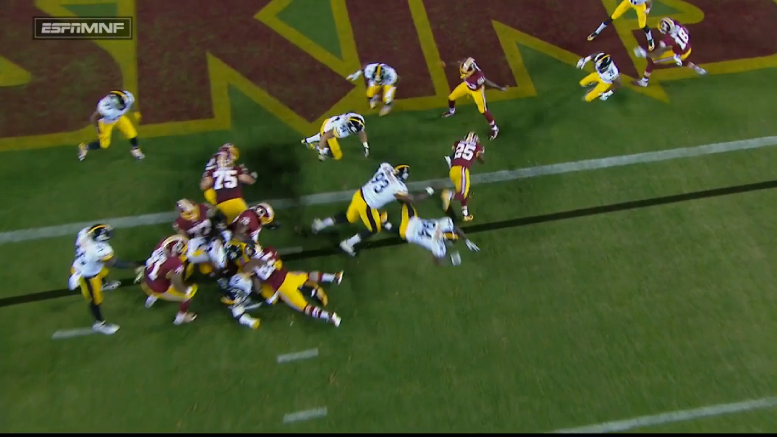While the Pittsburgh Steelers may overall still hold a fairly solid ranking with respect to their red-zone defense, having only allowed three touchdowns thus far through three games when opponents breach the end zone, there is another statistic that is much more worrying, and one that is growing.
At the moment, the Steelers defense is allowing their opponents to score points on 40 percent of their offensive possessions. In other words, two out of every five drives that the defense is one the field for will result in scores. This currently places them right at the border of the bottom third of the league in this defensive category, which comes courtesy of the always-resourceful Pro Football Reference.
In the season opener in Washington, the Steelers defense allowed exactly this rate, as they faced 10 drives and allowed four scores. But three of those scores were field goals, though it should also be noted that one of those 10 drives was a one-play kneel-down at the end of the first half, so in reality, they faced nine meaningful drives.
The defense did do well against the Bengals in preventing them from capitalizing on many of their drives, as Cincinnati again scored four times—with three scores being field goals—but they had 15 drives on which to try to score. Nine of the Bengals’ drives ended in punts, and two more ended in fumbles—though, again, the final drive was a one-play lateralpalooza.
Against the Eagles, however, the Steelers faced just 10 drives, but they gave up six scores, including four touchdowns, and all of the scores came on Philadelphia’s first seven possessions. By the Eagles’ final three possessions, the game was already in the waning moments of the third quarter and they had a 31-point lead, with their efforts geared toward running down the clock.
You could say, then, that the three drives in the fourth quarter were really extended garbage time, and the fact that the defense was able to draw punts at the end of these drives is obviously not reflective of their overall body of work over the course of the game when the result was actually being contested.
There is clearly, I think, a problem here in the defense’s ability to prevent opposing offenses from scoring. 12 of their scoring drives allowed this year have traveled over 50 yards, and only one spanned less than 40 yards, so it is clear that these scores have been earned, and not given.
The average drive that the Steelers defense has faced this season, when factoring in all drives, including the kneel and the lateral play in the Bengals game, has still managed to encompass, on average, 5.6 plays. It gets much closer to six plays if you factor those two drives out.
Mike Tomlin said last week that while the third-down numbers have been good, the first- and second-down production allowed has been lacking. These numbers show that, and I think it all came to a head on Sunday against the Eagles.








